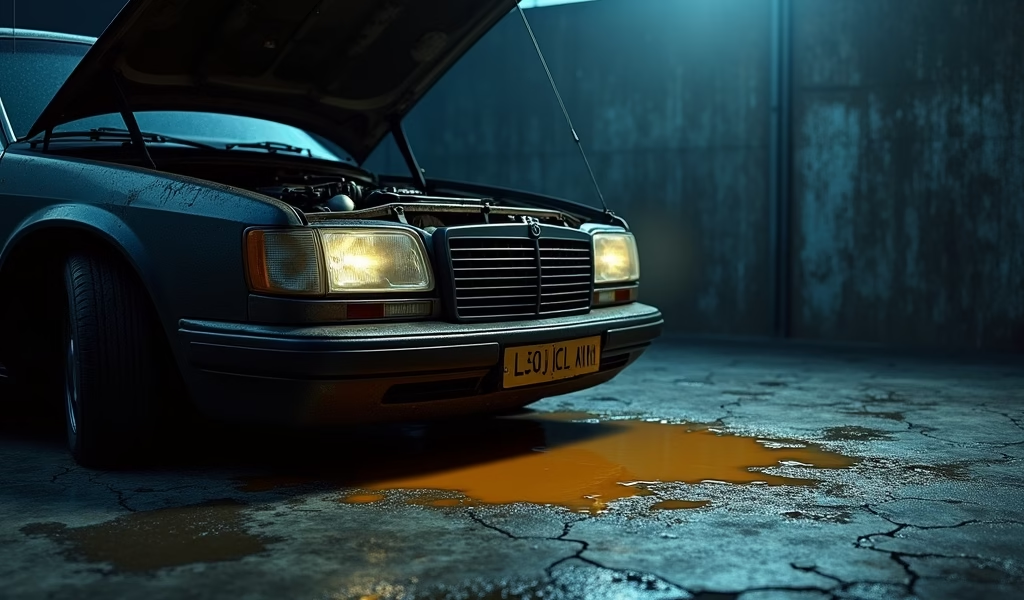Overview
This article provides five money-saving car maintenance hacks from a professional mechanic, including toothpaste for headlight restoration, DIY fuel system cleaning, the penny test for tire tread, WD-40 for dashboard restoration, and smartphone-based diagnostics. Each technique is explained with step-by-step instructions and rationale, emphasizing how regular implementation can extend vehicle lifespan while saving hundreds in service costs.
Table of Contents
- Introduction
- The Toothpaste Headlight Restoration Trick
- DIY Fuel System Cleaning
- The Penny Test for Tire Tread
- WD-40 for Dashboard Restoration
- DIY Electronic Diagnostics with Smartphone Apps
- Conclusion
- Frequently Asked Questions
Introduction
Your vehicle isn’t just transportation—it’s an investment that deserves proper care. As a mechanic with over 15 years in the garage, I’ve seen firsthand how simple maintenance can save car guy cars from premature retirement and save owners thousands in repairs.
Whether you’re a seasoned car enthusiast or just someone looking to extend your vehicle’s lifespan, these proven maintenance hacks will help keep your ride running smoothly. The beauty of these tips? You don’t need advanced mechanical skills or expensive tools to implement them.
Let’s dive into five professional-grade maintenance hacks that can save you significant money while keeping your car guy cars performing at their best.

The Toothpaste Headlight Restoration Trick
Cloudy, yellowed headlights aren’t just an eyesore—they’re a genuine safety hazard. Diminished headlight output can reduce nighttime visibility by up to 50%, according to the AAA Foundation for Traffic Safety. Professional restoration typically costs between $75-150, but you can achieve impressive results with something you already have at home.
Standard toothpaste (not gel) contains mild abrasives that effectively polish oxidized plastic headlight lenses. The secret lies in the same compounds that remove stains from your teeth.
Here’s how to perform this money-saving restoration:
- Wash your headlights thoroughly with soap and water to remove surface dirt
- Tape around the headlights to protect your paint
- Apply a quarter-sized amount of white toothpaste (preferably containing baking soda) to a microfiber cloth
- Rub in firm circular motions for 3-5 minutes per headlight
- Rinse thoroughly with clean water
- Apply a UV sealant (optional but recommended for longer-lasting results)
This technique works because toothpaste contains calcium carbonate and other mild abrasives that gently remove the oxidized layer without scratching the plastic underneath. For severely yellowed headlights, you may need to repeat the process or move to a specialized headlight restoration kit.
While professional restoration might last longer, this $2 solution can restore significant clarity and improve your nighttime visibility for 3-6 months. The difference is immediately noticeable and can postpone a more expensive professional service.
DIY Fuel System Cleaning
Modern engines are precision machines, and even minor fuel system deposits can rob you of power and efficiency. Most drivers don’t realize that carbon buildup in fuel injectors, intake valves, and combustion chambers begins affecting performance long before any warning lights appear.
Professional fuel system cleaning services range from $120-250, but you can achieve comparable results at a fraction of the cost with quality fuel system cleaners.
For optimal results:
- Choose a premium fuel system cleaner (PEA-based cleaners like Techron or Red Line Complete SI-1 are industry standards)
- Add the cleaner when your tank is nearly empty (about 1/8 full)
- Fill up immediately with high-quality fuel to ensure proper mixing
- Drive normally for at least 50 miles to allow the cleaner to work through your system
I’ve seen fuel system cleaners restore up to 5% in lost fuel economy and eliminate rough idling issues on high-mileage vehicles. For best results, perform this maintenance every 5,000 miles or quarterly.
Many first-time car guy cars particularly benefit from this treatment, as they often have more sensitive fuel systems. The improvement in throttle response and cold-start performance is usually noticeable after just one treatment.
The Penny Test for Tire Tread
Your tires represent the only contact points between your vehicle and the road. Once tread depth falls below safe levels, stopping distances increase dramatically—especially on wet roads.
While a tire depth gauge provides precise measurements, the classic penny test offers a quick, free alternative that requires nothing more than a penny and a few seconds of your time.
Here’s the proper technique:
- Insert a penny into your tire’s tread groove with Lincoln’s head upside-down and facing you
- If you can see the top of Lincoln’s head completely, your tread is worn below the safe threshold of 2/32 inch
- Check multiple points across each tire, especially the inside and outside edges where uneven wear often begins
- Pay special attention to any tires showing signs of irregular wear patterns
For even greater safety, particularly in areas with frequent rain or snow, consider using a quarter instead of a penny (with Washington’s head). If you can see the top of Washington’s head, your tread is below 4/32 inch—still legal, but approaching the replacement threshold for wet-weather safety.
This simple test can prevent a $150+ towing bill and potentially save lives by identifying dangerous tires before they fail. Remember to check your tires monthly, as even subtle changes in pressure can accelerate tread wear.
WD-40 for Dashboard Restoration
UV exposure gradually deteriorates your dashboard, creating a tired, faded appearance that ages your interior prematurely. Those unsightly cracks and fading not only look bad but can actually decrease your vehicle’s resale value.
While dedicated dashboard protectants work well, they typically cost $8-15 per bottle. Many professional detailers use a surprising alternative: WD-40. This household staple costs less than $5 and performs remarkably well on vinyl dashboards.
Follow these steps for professional results:
- Clean your dashboard thoroughly with a microfiber cloth to remove dust and debris
- Spray a small amount of WD-40 onto a clean cloth (never directly onto the dashboard)
- Apply in gentle, circular motions starting from the top and working down
- Allow it to penetrate for 2-3 minutes
- Buff with a clean, dry microfiber cloth to remove excess and prevent shine
Important safety note: Never use WD-40 on steering wheels, pedals, shifter knobs, or any surface where slipperiness could create a safety hazard. Additionally, avoid using this technique on leather dashboards—stick with proper leather conditioners instead.
This hack works because WD-40 contains natural oils that penetrate and condition vinyl surfaces. The transformation is often dramatic, especially on older vehicles with sun-damaged interiors. One application typically lasts 3-4 weeks.

DIY Electronic Diagnostics with Smartphone Apps
The dreaded check engine light once meant an automatic trip to the mechanic, often resulting in diagnostic fees before any actual repairs began. Today’s technology has changed the game, putting professional-grade diagnostic capabilities in your pocket.
With a Bluetooth OBD2 scanner (available for $15-30) and a smartphone app, you can access your vehicle’s computer system and read diagnostic trouble codes yourself.
Getting started is straightforward:
- Purchase a Bluetooth OBD2 scanner compatible with your smartphone
- Download a reputable diagnostic app (Torque Pro for Android or OBD Fusion for iOS)
- Locate your vehicle’s OBD2 port (typically under the dashboard near the steering column)
- Connect the scanner and pair it with your phone
- Use the app to retrieve and interpret error codes
This approach can save you the $75-150 diagnostic fee many shops charge simply to read codes. While complex issues still warrant professional attention, many common problems—like a loose gas cap triggering an emissions code—can be identified and resolved without a mechanic.
For the best cars of 2025 and beyond, these diagnostic tools become even more valuable, as newer vehicles generate more detailed diagnostic information. You’ll gain insights into everything from oxygen sensor efficiency to catalyst performance, often before more serious problems develop.
The real value comes from being an informed consumer when you do visit the shop. Walking in with knowledge of the specific issue prevents unnecessary upselling and ensures repairs address the root cause rather than just symptoms.
Conclusion
These five maintenance hacks represent the sweet spot between DIY simplicity and professional-quality results. They’re accessible to anyone who wants to maintain their car guy cars without specialized training or expensive equipment.
By implementing these techniques regularly, you’ll not only save hundreds in service costs but also extend your vehicle’s lifespan. The key is consistency—making these hacks part of your routine maintenance schedule rather than one-time fixes.
Remember that while these tips can help you maintain your vehicle between professional services, they don’t replace scheduled maintenance for critical systems. Think of these hacks as supplements to—not replacements for—your vehicle’s recommended service schedule.
Your car represents a significant investment. These simple maintenance strategies help protect that investment while giving you greater confidence and control over your vehicle’s condition. With these techniques in your arsenal, you’ll join the ranks of savvy owners who keep their cars running strong well beyond the average lifespan.
What maintenance hacks have you discovered that saved you money? Share your experiences and let us know which of these techniques worked best for your vehicle.
Frequently Asked Questions
What makes a car a “car guy car”?
A car guy car typically offers an engaging driving experience, unique styling, or modification potential that appeals to automotive enthusiasts. These vehicles prioritize driving enjoyment over mere transportation and often develop passionate followings.
How often should I perform these maintenance hacks?
Headlight restoration and dashboard treatments should be performed quarterly, while fuel system cleaning is recommended every 5,000 miles. Tire checks should be monthly, and diagnostic scanning can be done whenever warning lights appear.
Can these maintenance hacks damage my car?
When performed correctly, these hacks pose minimal risk to your vehicle. Always test products on inconspicuous areas first and avoid using WD-40 on control surfaces where slipperiness could create safety hazards.
Do modern cars still benefit from these maintenance hacks?
Absolutely—modern vehicles still experience headlight oxidation, fuel system deposits, and dashboard deterioration. In fact, newer vehicles with complex electronic systems benefit greatly from diagnostic scanning capabilities.
What’s the best maintenance hack for improving fuel economy?
The DIY fuel system cleaning provides the most direct improvement to fuel economy by removing deposits that affect combustion efficiency. Regular tire pressure checks are a close second, as underinflated tires can reduce fuel economy by up to 3%.


Pingback: Car Lover: 7 Proven Auto Care Hacks - knowsyourcar.com